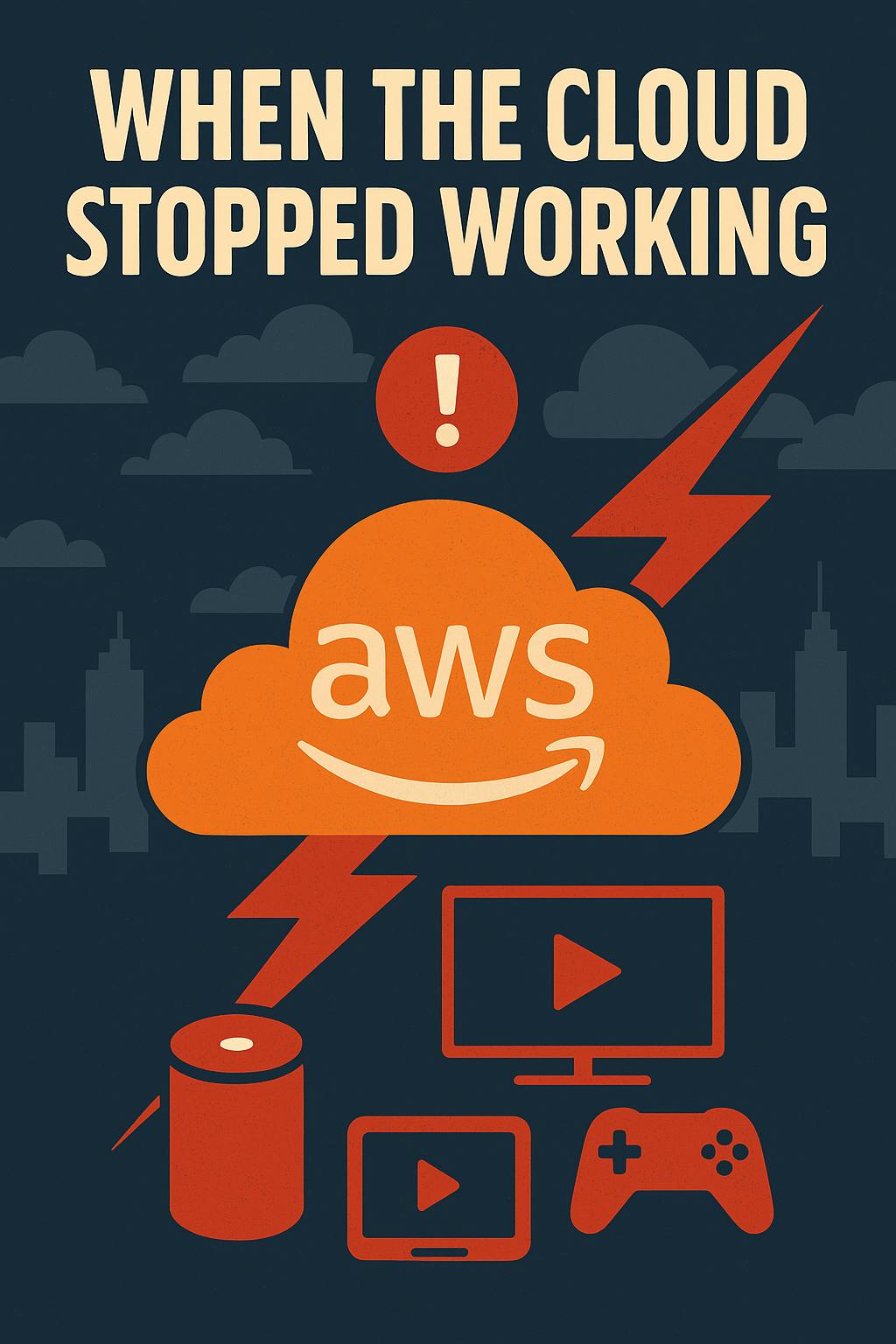Introduction: When the Cloud Stopped Working
On October 20, 2025, millions of people around the world suddenly found their favorite apps not working. From online shopping to gaming, video streaming, and even smart home devices — everything seemed to go quiet for a few hours.
The reason? A massive AWS outage.
Amazon Web Services (AWS) is the invisible backbone of the internet. It powers thousands of apps and websites, from Netflix to banking systems. When it goes down, the effects are felt everywhere.
Let’s break down what went wrong, why it happened, and what we can learn from this major cloud disruption.
What Happened During the AWS Outage of 2025?
In the early hours of October 20, AWS’s US-East-1 region — one of its biggest data centers — started to fail. Users saw apps freezing, websites not loading, and devices unable to connect online.
The outage lasted several hours, causing interruptions for major services like Alexa, Snapchat, and Fortnite. Businesses relying on AWS servers also faced downtime, costing them valuable traffic and sales.
AWS engineers worked through the day and announced that systems were fully restored by evening. But by then, the internet had already felt the shockwaves.
The Real Reason Behind the AWS Outage
AWS later explained that the main issue was a DNS (Domain Name System) failure. In simple terms, DNS is like the phonebook of the internet — it helps computers find and connect to the right servers.
Here’s what went wrong:
- DNS Resolution Failed – AWS’s system couldn’t find a key database (DynamoDB) that many of its own services depend on.
- Network Load Balancer Errors – A health monitoring tool for AWS’s internal load balancers started malfunctioning, sending incorrect signals.
- Cascading Service Failures – Once the main database and load balancers went down, other AWS tools like EC2, Lambda, and CloudWatch also started failing.
- Massive Retry Storms – Apps kept trying to reconnect automatically, flooding AWS with extra traffic and making the recovery slower.
In short, a small glitch in one part of AWS triggered a chain reaction across its entire ecosystem — a perfect example of how complex and interconnected the cloud really is.
How the Outage Affected Users
The AWS outage didn’t just affect websites — it disrupted everyday life:
- Smart home devices like Alexa and Ring stopped responding.
- Streaming and gaming services such as Fortnite and Twitch faced lags and disconnections.
- Businesses relying on AWS-hosted sites and apps lost hours of productivity.
- Developers and IT teams scrambled to find workarounds and keep critical systems running.
It was a reminder that even the most advanced technology can fail — and when it does, it affects millions at once.
Key Takeaways from the AWS Outage 2025
- Don’t Rely on a Single Region
Most companies use AWS’s US-East-1 as their main region. When that region goes down, so does everything linked to it. Businesses should always plan for multi-region backups.
- DNS Is a Single Point of Failure
DNS may seem simple, but when it fails, it can bring down huge systems. Having multiple DNS failovers is critical for resilience.
- Health Monitoring Needs Redundancy
A monitoring system should never be the cause of an outage. This event showed that even internal health-check tools need strong safeguards.
- Prepare for “Retry Storms”
When servers go down, automatic retries can overwhelm them during recovery. Smart throttling and rate limiting can help prevent this.
- Cloud Is Powerful — but Not Perfect
Cloud platforms offer speed and scalability, but true reliability comes from good architecture and disaster planning, not just trust in the provider.
What Businesses Can Learn
The AWS outage of 2025 teaches a simple truth:
“If your app depends on the cloud, your business depends on resilience.”
Companies should:
- Spread workloads across multiple regions.
- Regularly test disaster recovery plans.
- Understand their hidden cloud dependencies.
- Monitor third-party integrations that could break when AWS fails.
With smart planning, businesses can turn outages from disasters into short disruptions.
Final Thoughts: The Cloud Is Still the Future — But It Needs Better Backup Plans
Even though the AWS outage caused chaos, it also proved how quickly engineers can respond to large-scale failures. Within hours, most services were restored, showing the strength of AWS’s infrastructure.
But the incident is a wake-up call for developers, startups, and enterprises alike — the cloud isn’t magical. It’s still just a network of systems, and systems can break.
The best defense? Design for failure, prepare for downtime, and always have a Plan B.
Because when the cloud sneezes, the internet catches a cold.


